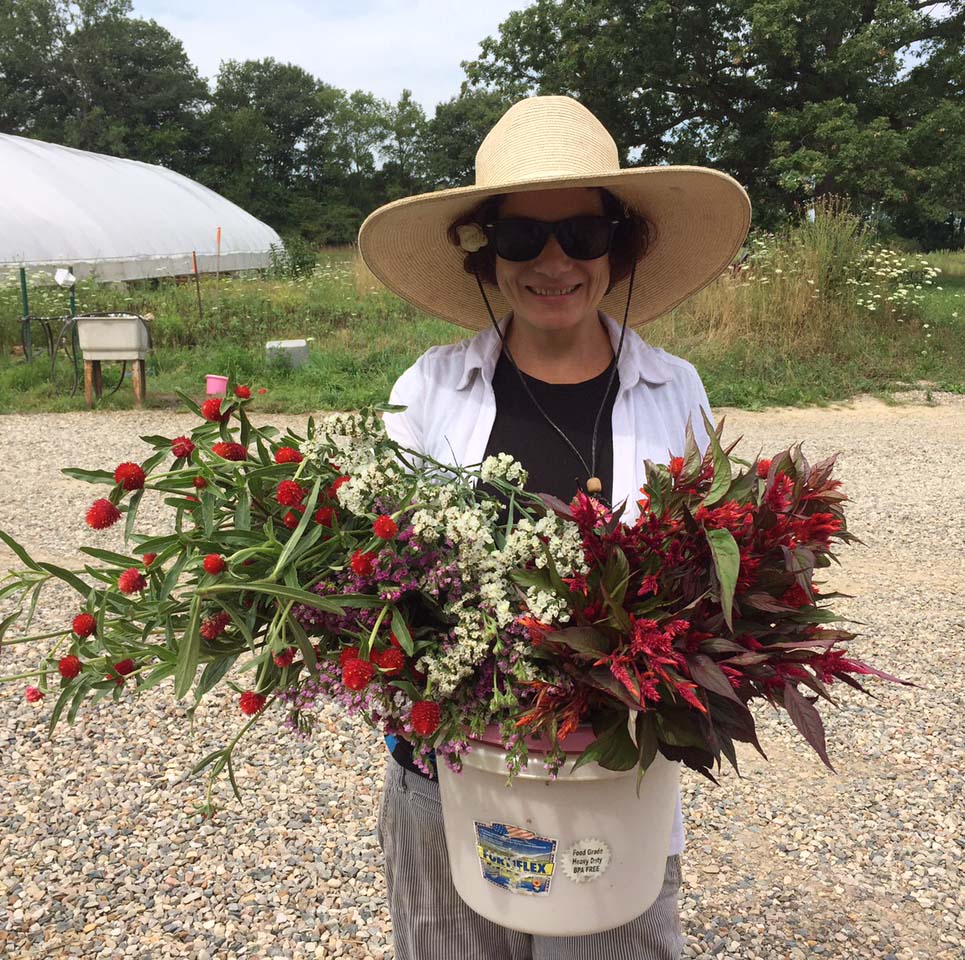
Trilby Becker picking flowers for bouquets she offers through a CSA.
Greetings, flower and nature lovers! Trilby Becker here, from Sunseed Farm. My husband Tomm and I have a four-season vegetable and flower farm in northeast Ann Arbor. Trilby the farmer’s wife, growing flowers and caring for children in the country, is so clichéd and seemingly out of character for me that I would have laughed if you told me in my twenties that’s where I was headed. But it’s somehow perfect for me now and I am learning so much about science, lore, history, and running a business that I just want to share it. And then there are the funny and sweet personal stories about farm and family life that put it all into context. So welcome to this running dialogue from a New Yorker-turned farm girl!
It is late summer, and I have been thinking about pests and weeds. Because I am overrun! This is the time when the excitement and anticipation of the early season has peaked into the high times of summer, when the vines are heavy with tomatoes, the ground is tangled with cucumbers and melons, the red peppers and eggplants are dark and shining, and we are making gazpacho by the barrel.
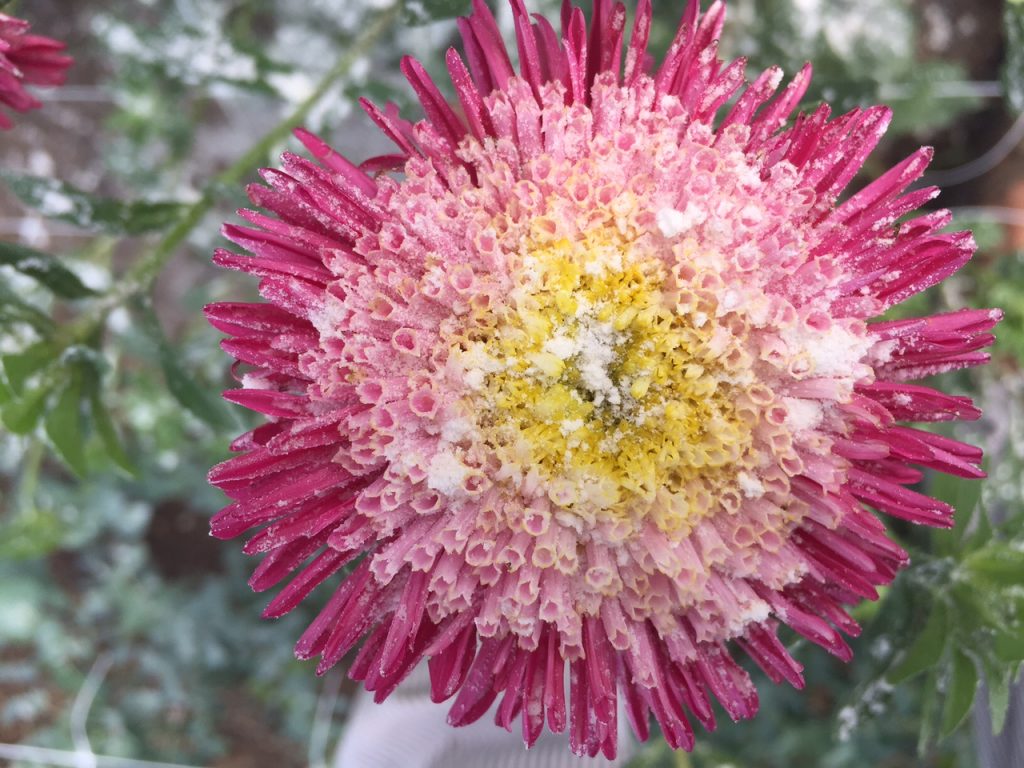
An aster dusted with flower and sprayed with garlic water in a mostly successful attempt to deter pests naturally. Photo by Trilby Becker.
As a flower farmer I’m working alongside, harvesting armfuls of sunflowers, celosia, zinnias, asters and other lovely things, and all of this glory has our resources almost spent. The pests are hitting their stride, and I am beginning to weary of their constant nibblings and munchings. I battled the Japanese beetle for the early season, finally yielding the basil to the fight but managing to salvage the zinnias thanks to a seductive and rather disgusting pheromone trap.
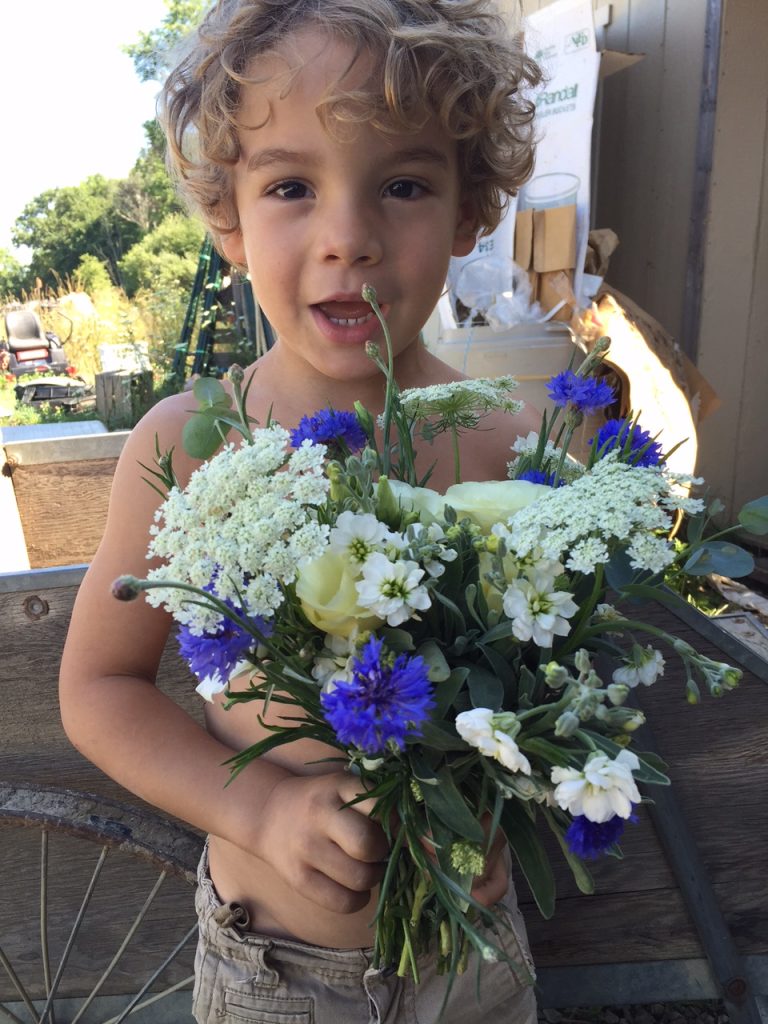
Silas, age 4, helps his mom model a beautiful bouquet. Photo by Trilby Becker.
The grasshoppers have proven to be the more formidable foe, and my four-year old son Silas and I are attempting to save the asters by sprinkling them with flour and spraying them with garlic water (he was disappointed when I didn’t spray him back). I considered hitting them with Spinosed, the most lethal weapon allowed by the organic farmer, but held back. Most of their brand-new blossoms are sheared to nubbins as soon as they emerge by these voracious beasts, and we are at our wits end. It seems abundance may ultimately be the key to survival for the organic flower grower: grow enough for everyone to have some!
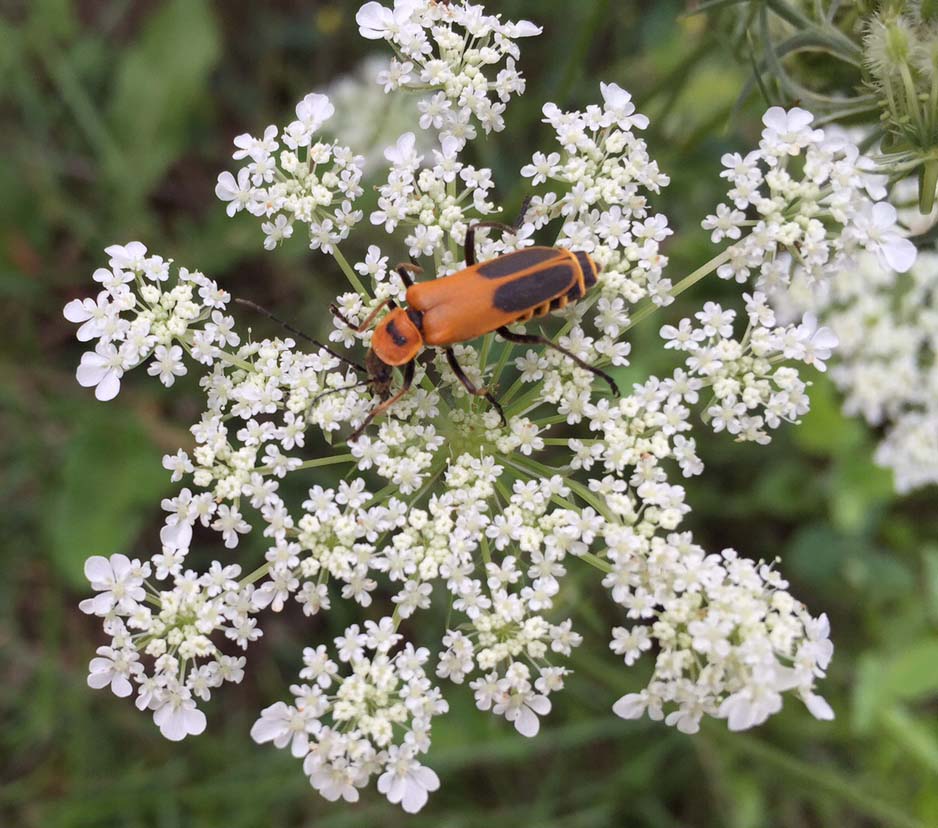
Goldenrod soldier beetle.
Managing pests on an ecological farm is a delicate endeavor. Insects are a vital part of a farm’s ecology and in the right balance they bring many benefits to the plants and the animals that depend on them. In mid-summer my flowerbeds were absolutely covered in Goldenrod soldier beetles. They look very much like bees but no one on the farm recognized them because they do not like vegetables. I was convinced they were devouring my flowers because something was, and I was about to spray them with Spinosed (which is a broad-spectrum pesticide allowed by organic standards because it is naturally-derived and not persistent in the environment). Once I was able to identify the beetle, however, I learned that they are in fact pollinators, and moreover they eat thrips and aphids, which are indeed eating the flowers. So I am glad I didn’t pull the trigger. And rather than poison the grasshoppers, which would doubtless kill a lot of harmless insects as well, I have found that the garlic water is actually working, at least a bit. If it were possible to catch the buggers, I could always kill them by hand (eeek!!)
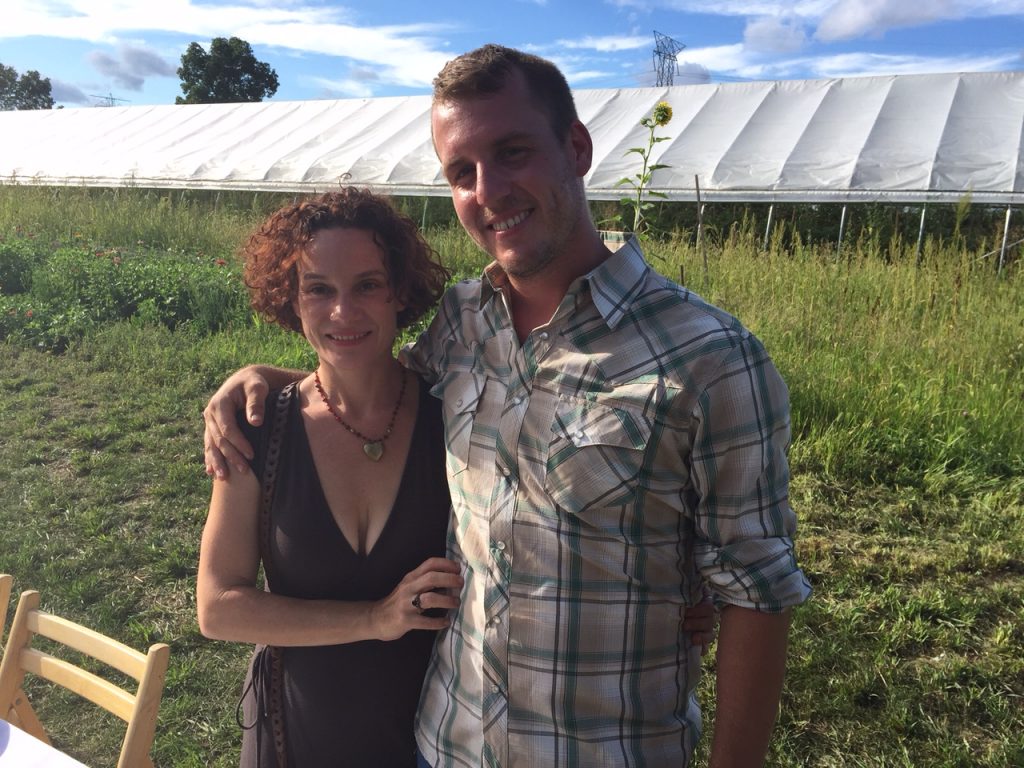
Here’s one of our hoop houses–oh, and my husband, Tomm! 🙂 He’s the vegetable farmer side of our operation.
Now that my flower CSA is over (CSA means “community supported agriculture,” where people buy a season’s worth of veggies, flowers, etc. in advance), I am turning my attention to the hoop house full of bulbs I am about to plant for harvest in April. Thousands of anemones, ranunculus, and tulip bulbs will arrive in early October, and a 96’x33′ passively-heated hoop house needs to be cleaned out and prepped with compost to receive them. I have never overwintered bulbs in a hoop before, so I have to hit the books and figure out what on Earth I am doing before it’s time to do it. So stay tuned until next month!
Trilby Becker is a Legacy volunteer who photo-monitors protected properties and, through guest blog posts like this one, contributes her perspective on understanding and being in touch with nature on a daily basis. In her case it’s primarily through small-scale farming, but if you garden, hike, picnic, observe wildlife, do nature photography, or otherwise enjoy nature, you can probably relate!

 RSS Feed
RSS Feed